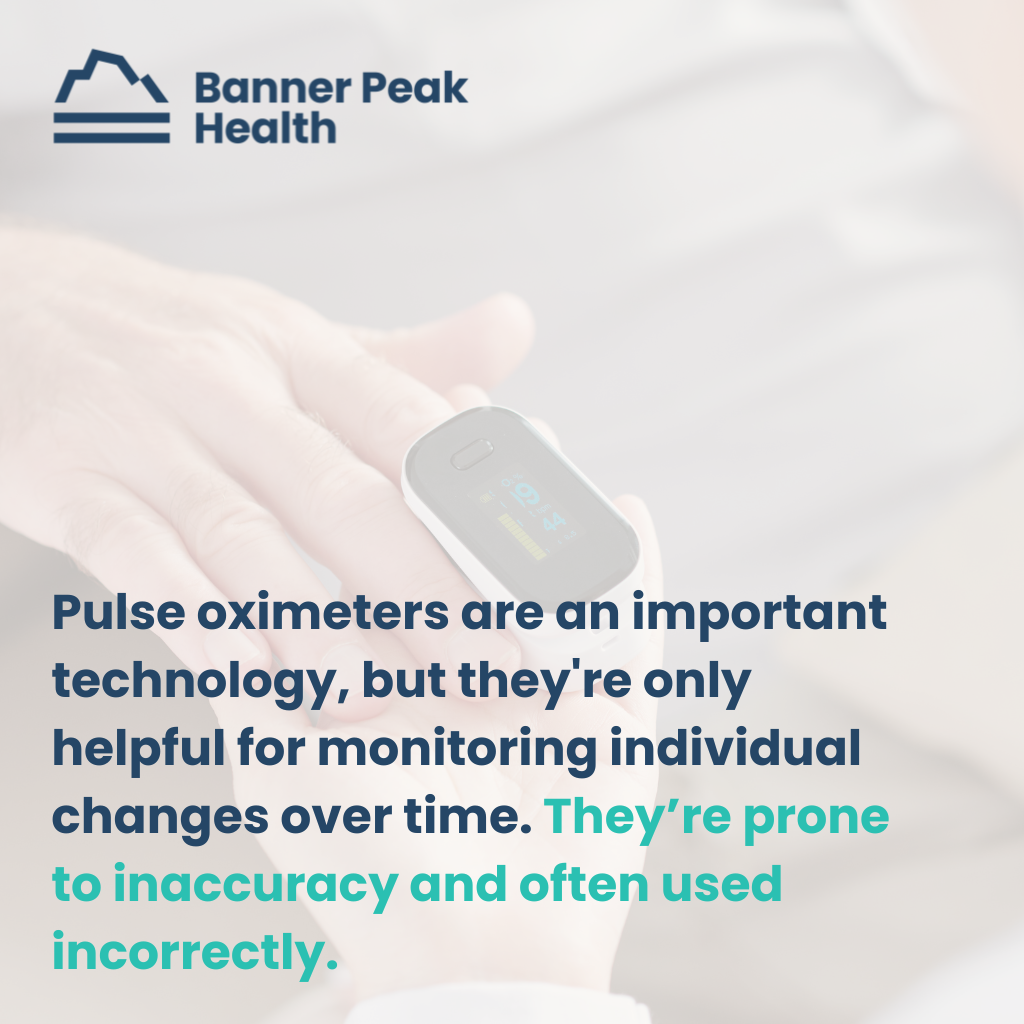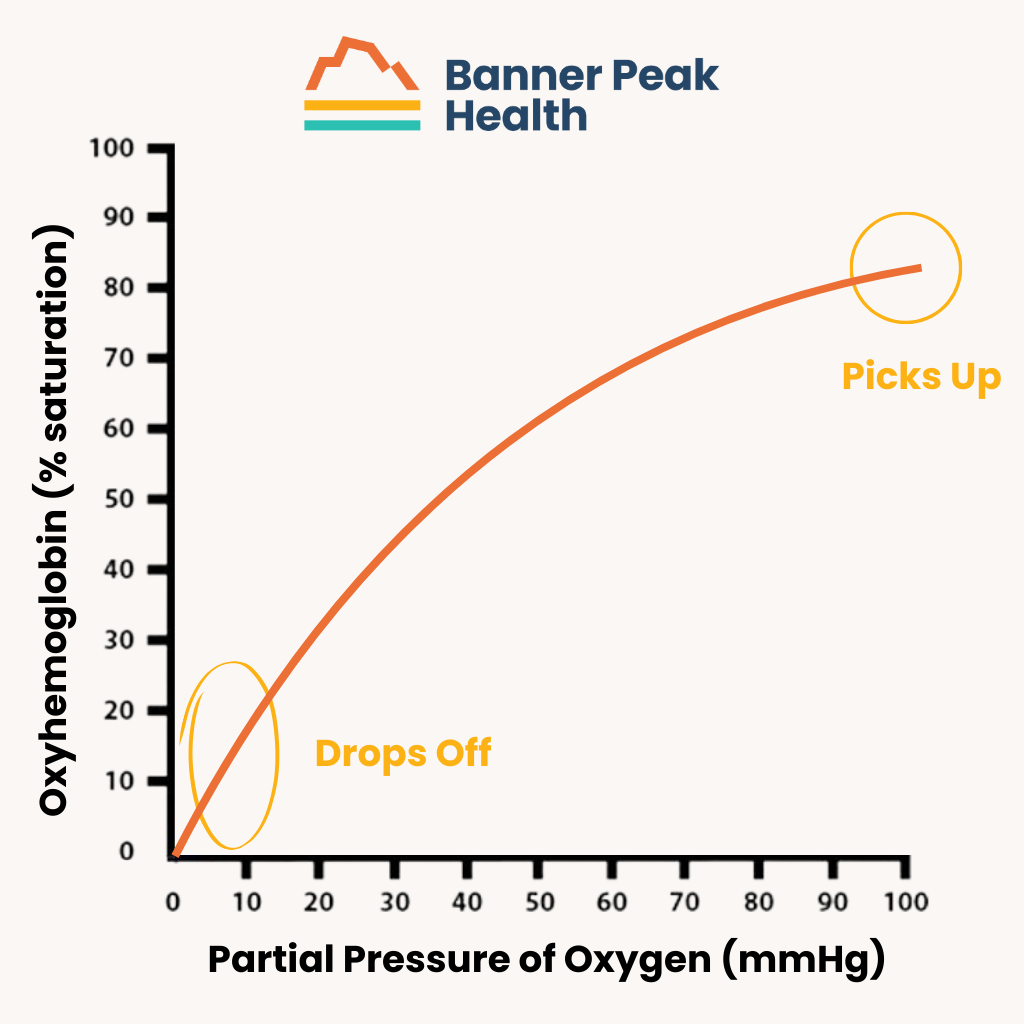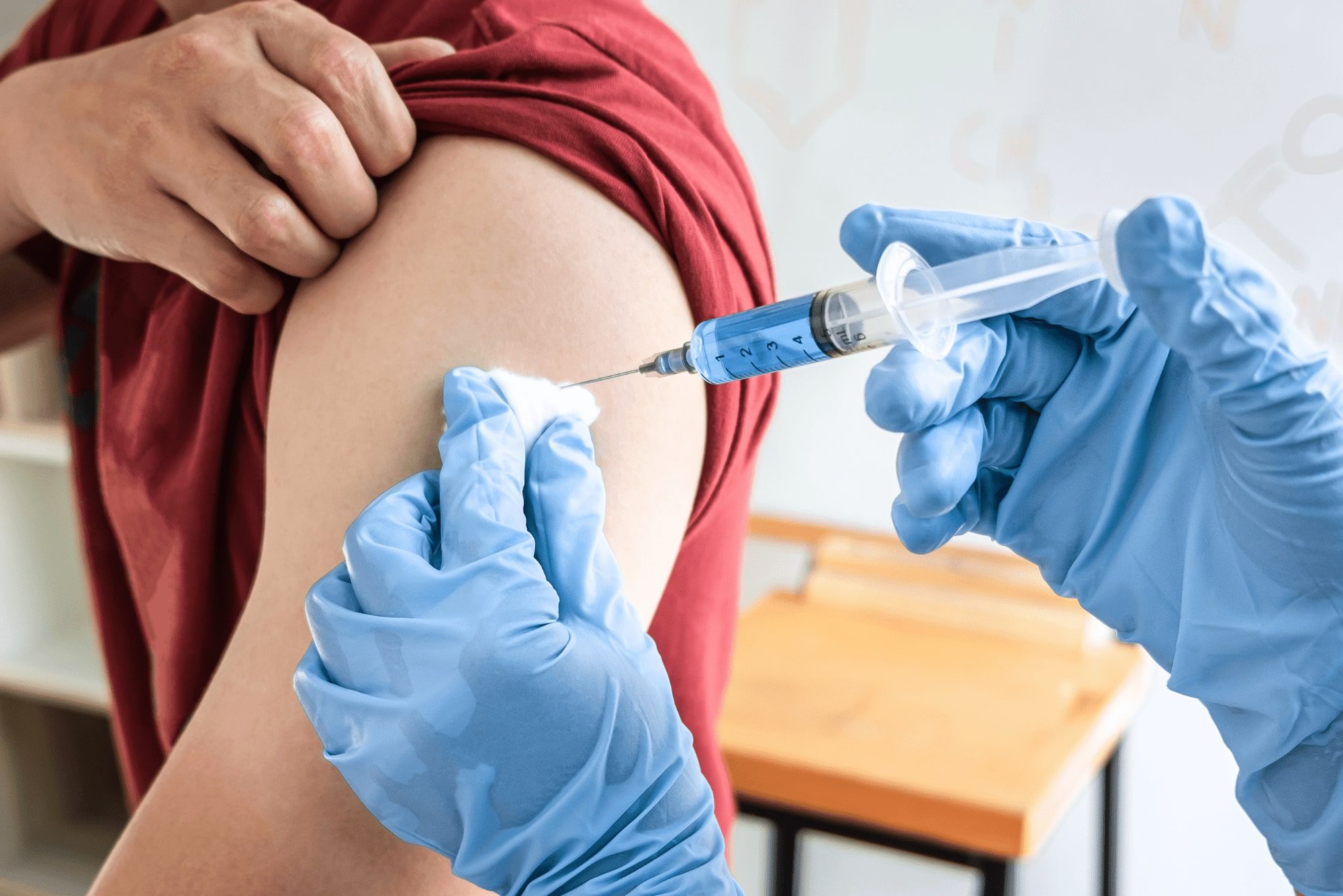We all want to know we’re healthy and aging well. But what does oxygen saturation tell us about our health? What is oxygen saturation? Is there a normal oxygen saturation by age? Is it a good metric to track and gauge our health against?
Pulse oximetry is a tool worth understanding, and it’s essential to only use it in conjunction with qualified healthcare.
What Is Oxygen Saturation?
Our metabolism uses oxygen, which makes up 21% of our air, to produce energy. Oxygen saturation is the percentage of oxygen bound to the hemoglobin (a protein in red blood cells) in our blood.
However, the process is complicated.
Imagine a city (the body) where various construction sites (tissues) need lumber (oxygen) to function. Trucks (hemoglobin) go to the lumberyard (lungs) to pick up their cargo. They follow this system:
- Trucks (hemoglobin) arrive at the lumberyard (lungs) empty.
- Workers (alveoli: tiny air sacs in the lungs) load lumber (oxygen) onto the trucks.
- Each truck can carry four pieces of lumber (each hemoglobin binds four oxygen molecules).
- Fully loaded trucks leave the lumberyard (lungs) and enter the highway system (bloodstream).
- The highway has a central hub (the heart) directing traffic to different parts of the city (body).
- Trucks (hemoglobin) travel along various roads (blood vessels) to reach construction sites (tissues).
- The trucks (hemoglobin) turn bright red when loaded with lumber (oxygen).
- At each site, workers unload (release) the needed lumber (oxygen) for use (absorption into cells).
- Empty trucks return to the lumberyard (lungs) to pick up more cargo (hemoglobin returns to the lungs).
- When empty or carrying less lumber (oxygen), the trucks (hemoglobin) appear darker, with a bluish tint.
This cycle continues, ensuring a constant lumber (oxygen) supply to all construction sites (tissues) in the city (body).
How to Measure Oxygen Saturation
We measure oxygen saturation in two ways: blood testing and pulse oximetry. While drawing arterial blood for lab tests is accurate, it’s painful and inconvenient.
Pulse oximetry is non-invasive. It measures the color change of the hemoglobin to determine oxygen saturation. Blood with ample oxygen is reddish, while blood with depleted oxygen is more purple. Additionally, it measures your pulse rate — the quantity of hemoglobin that moves through your skin every time your heart contracts.
How Accurate Are Pulse Oximeters?
Source: Mockup Graphics via Unsplash
Pulse oximeters come in medical and over-the-counter (OTC) grades.
We don’t know the accuracy of OTC-grade devices because they aren’t FDA-approved. FDA medical-grade pulse oximeters are more accurate (±2–4% for oxygen saturation in the 90–100% saturation range). However, these devices become less accurate when oxygen saturation falls below 90%.

In addition to the inherent error source from the devices themselves, common use errors include:
- Too much ambient light
- Inadequate wait time between measurements
- Insufficient perfusion
- A cold finger or poor finger placement
- Nail polish on the measured finger
A pulse oximeter’s ability to detect the color of hemoglobin can be influenced by skin color. Darker skin containing more melanin absorbs more light and can produce falsely high readings.
An example occurred during the pandemic when many relied on pulse oximeters to triage medical emergencies. Tragically, people with darker skin were less likely to have their low oxygen levels show up on pulse oximeters.
As a result, during the height of the pandemic, this demographic probably suffered during triage decisions in the Emergency Department, being sent home when their true oxygen levels were lower than displayed on a pulse oximeter. This was an inexcusable ethical lapse by the medical community.
Use Cases for Pulse Oximeters
The best use case for this device isn’t a single measurement, but looking at an individual’s changes over time.
During the pandemic, we gave anyone who tested positive for COVID an OTC pulse oximeter and instructed them to monitor their oxygen saturation. Rather than looking for “normal oxygen saturation by age,” we looked for change in individuals.
For example, if a person’s pulse oxygenation looked like this: 94, 94, 94, 89 — we knew we had a problem.
Now, we recommend these devices for a very narrow set of conditions. When a member has a lung infection or lung impairment, such as an emphysema flare, pneumonia, or severe COVID, we use a pulse oximeter to monitor the illness over time, trying to detect a worsening.
Is There a Normal Oxygen Saturation by Age?
Technically, yes, there are age-related changes to oxygen saturation. Children, young adults, and middle-aged people usually have between 97% and 100% oxygen saturation. Once a person reaches 70 or older, their number will be closer to 93–97%.
However, as mentioned, even the higher-quality FDA-approved pulse oximeters are only accurate to ±2–4%. Any difference due to aging is less than the device’s accuracy. So, you can’t accurately measure change due to aging by measuring a single person.
Today’s Takeaways
Pulse oximeters are an important technology, but they’re only helpful for monitoring individual changes over time.
They’re prone to inaccuracy and are often used incorrectly. The device can create more anxiety than it alleviates. It’s not a valuable instrument at home, independent of consulting a doctor.
If you’re concerned about your oxygen saturation compared to the normal oxygen saturation by age, visit your healthcare physician and use a pulse oximeter in conjunction with their advice.


Barry Rotman, MD
For over 30 years in medicine, Dr. Rotman has dedicated himself to excellence. With patients’ health as his top priority, he opened his own concierge medical practice in 2007 to practice medicine in a way that lets him truly serve their best interests.




